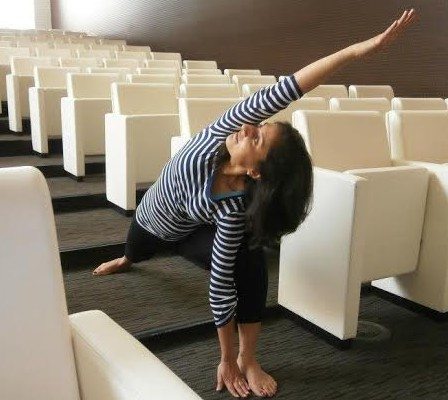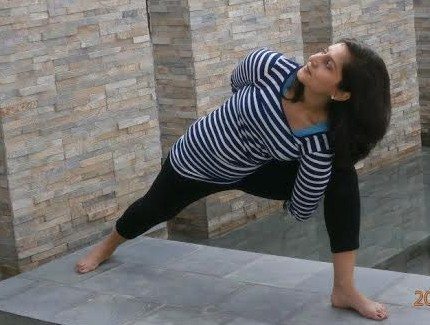The spinal column can move in four basic ways, i.e. forward [flexion], backward [extension], twist [rotation] and sideways [lateral flexion]. Very often in our practice the side bends are done the least, which is sad, as they help to stretch and tone the muscles along the sides of the abdomen, rib cage and spine keeping the waist trim, breathing full and spine supple.
A true side bend fully contracts one side of the body while expanding the other. So, a side bending practice can open areas we don’t often stretch and leave one feeling more balanced.
When performing side bending asanas, it’s important to stand erect and elongate the spine. Then move slowly into the side bend. One should not push too far to avoid injury. It is always a good idea to do a few simple side bends to warm up the spine before attempting any complex poses.
This category of asanas releases tension in the body so if you are stressed or tense, a few standing or seated side bends can release the tension and allow the body to feel calm and released.
Routinely we bend over and straighten up several times but don’t bend sideways often enough. Bending sideways gives a nice ‘C’ shape to the spine, stretching the lateral muscles and truly increasing flexibility in all directions.

Each type of pose gives a specific benefit. It’s important to include poses from all categories such as standing, seated, twist and side bends.
So, get onto your mats, warm up the sides and practice a few side bending asanas to shape your torso and get rid of those stubborn ‘love handles’ forever! Really, give it a try and experience the effects.
Until next time, with the inverted poses in Yoga.
Namaste!
Neelanjana Bharadwaj – Yoga Expert

